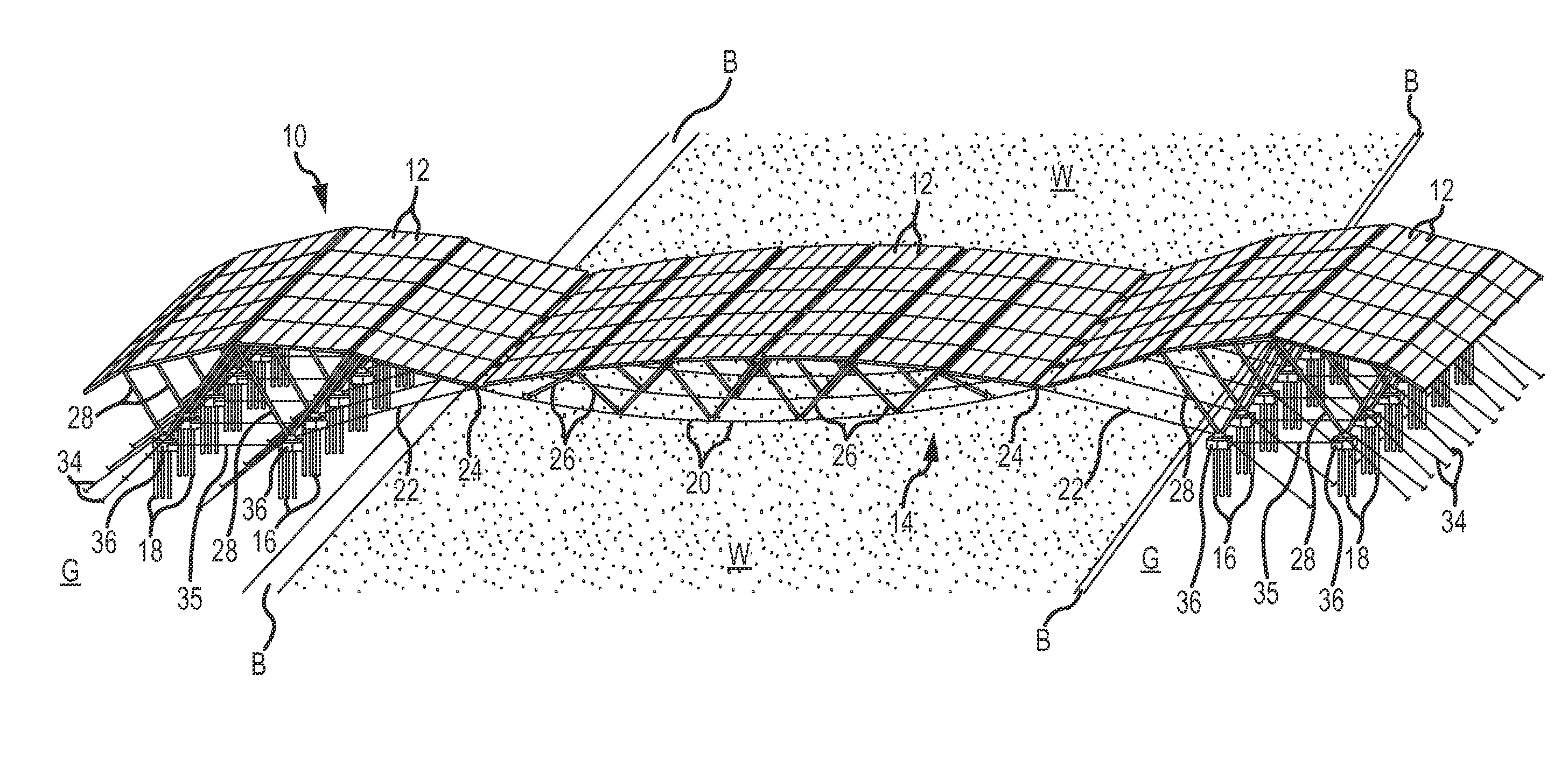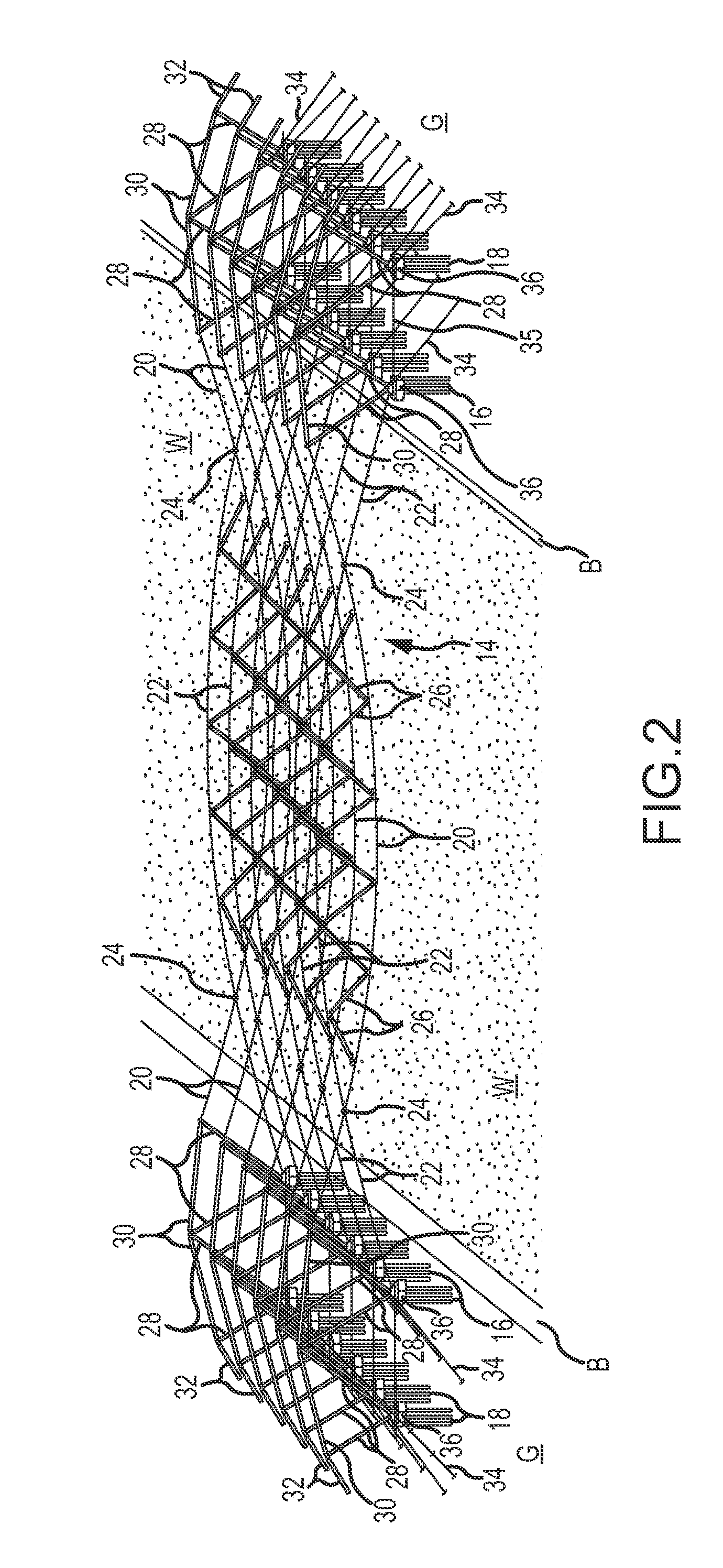Solar array system for covering a body of water
a solar array and water body technology, applied in the field of solar panels, to achieve the effect of facilitating installation of very large solar panel arrays, reducing evaporation, and saving water
- Summary
- Abstract
- Description
- Claims
- Application Information
AI Technical Summary
Benefits of technology
Problems solved by technology
Method used
Image
Examples
Embodiment Construction
[0039]Referring to FIGS. 1, 2, 2A and 2B, a solar panel array 10 is illustrated in a first embodiment. The array 10 spans a body of water W, such as a canal or aqueduct. The body water W is shown as having two generally parallel extending banks B. Although the solar panel array 10 is especially adapted for installation over long stretches of bodies of water with generally parallel banks, it shall be understood that the array 10 is not limited to any particular configuration for a body of water. A length of the array can be defined as the length that the array extends along opposing banks of the body of water W. A width of the array can be defined as the distance between the banks.
[0040]The solar panel array 10 includes primary groups or assemblies including (i) a plurality of solar panels 12, (ii) a plurality of cable truss assemblies 14 that are spaced from one another along a length of the array, and (iii) a plurality of support columns or similar ground mounted structures that su...
PUM
 Login to View More
Login to View More Abstract
Description
Claims
Application Information
 Login to View More
Login to View More - R&D
- Intellectual Property
- Life Sciences
- Materials
- Tech Scout
- Unparalleled Data Quality
- Higher Quality Content
- 60% Fewer Hallucinations
Browse by: Latest US Patents, China's latest patents, Technical Efficacy Thesaurus, Application Domain, Technology Topic, Popular Technical Reports.
© 2025 PatSnap. All rights reserved.Legal|Privacy policy|Modern Slavery Act Transparency Statement|Sitemap|About US| Contact US: help@patsnap.com



